by Lorri | Jan 4, 2012 | UnCorked
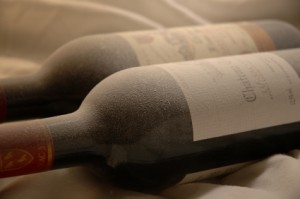 A few weeks ago, my husband and I nervously pulled the cork of a bottle we had tended for almost 15 years. Many occasions came and went with the discussion of whether it was too early, late or the perfect time.
A few weeks ago, my husband and I nervously pulled the cork of a bottle we had tended for almost 15 years. Many occasions came and went with the discussion of whether it was too early, late or the perfect time.
Only a small percentage of the world’s wines improve with age so it’s a wonderful moment when pure patience wins over anticipation in the battle of cellaring a bottle.
Wine does not have to be expensive to show the benefits of aging. Some Napa Valley Cabernets can gain spectacular benefits in 10 years while some Bordeaux transform after a hundred. Consider these tips on aging wines.
SPARKLING
Champagne, second to Bordeaux, may have the most distorted view of being age worthy. Aged Champagne can be described as an acquired taste. It loses its zip and bubble, making it much like a yeasty still wine. Avid collectors savor the taste but if you were given a bottle as a wedding gift 20 years ago, most likely it will not be what you are expecting. Most sparkling wines and nonvintage Champagne are best when opened within two years of bottling.
FORTIFIED
Fortified wines like Port and Madeira are best bets for long-term cellaring. It’s the combination of high alcohol and sugar slowing down the natural deterioration over time.
REDS
Long-term cellaring of Burgundy is a lot like playing the stock market; unless you know the producer, it’s a gamble. The same can be said of California pinot noir.
When the age-worthy pinot noir offers its combination of acidity, tannin and concentration, it is a masterpiece. But unless the growing conditions and the winemaker’s technique were perfect, most pinot noir is best consumed within two to four years.
CLIMATE CONTROL
Wine storage is generally the most important factor in successful aging. The lower the temperature, the slower the maturation. In general the more slowly a wine intended for aging matures, the greater complexity of the flavors. Also, in general the smaller the bottle size the faster its contents mature.
TO AGE OR NOT TO AGE (AND FOR HOW LONG)
A wine’s potential for aging depends on many factors including vintage, producer and storage conditions. The following is a general guideline for wines intended for cellaring: Cabernet sauvignon: four to 20 years Merlot: two to 12 years Nebbiolo: four to 20 years Pinot noir: two to eight years Sangiovese: two to eight years Tempranillo: two to 10 years Chardonnay: one to six years Riesling: two to 30 years Semillon (dry): two to seven years Semillon (botrytised): five to 25 years
by Lorri | Dec 28, 2011 | UnCorked
 When it comes to opening a bottle of champagne, you’re probably more worried about your toast falling flat than one of your guests.
When it comes to opening a bottle of champagne, you’re probably more worried about your toast falling flat than one of your guests.
Think again. Ricocheting and rocketing champagne corks are responsible for a surprising number of emergency room visits each year, according to the American Academy of Ophthalmology. And there’s no quicker way to dampen a party mood than by giving your best friend a black eye or worse, permanent eye damage.
There is an art to opening a bottle of sparkling wine smoothly and safely. The primary focus is cork control, because at 72 pounds per square inch, there is double the pressure in a bottle of sparkling wine than in a car tire. So for starters, never point the bottle at anyone or anything and don’t shake the bottle.
Warm champagne in a bottle that has been shaken is as dangerous as a loaded gun. If the bottle has been moved around a lot (and time is limited) place the bottle in the freezer for about 30 minutes to stabilize the pressure. Champagne or sparkling wine needs to be slightly cold when opened; for a short period it reduces the pressure and makes it marginally safer to open.
To open, hold down the cork with the palm of your hand and untwist the wire located on the neck of the bottle and remove it along with the foil covering the cork. Whenever possible hold your thumb over the top of the cork in case it pops unexpectedly. Tip the bottle away from your face at a 45-degree angle. Grasp the cork between your thumb and index finger, with your other hand gripping the base of the bottle; then gently twist the bottle, not the cork. When you twist the bottle you have more control.
At this point as the cork is released it should make a “hissing sigh” rather than a “pop.” The only thing left is to celebrate!
THE VALUES
- NV Torresella Prosecco, Italy (about $18 retail)
- NV Francis Ford Coppola Sofia Blanc de Blanc, California (about $21 retail)
- NV Clos de Nouys Vouvray Sec, France (about $25 retail)
THE SPLURGES
- 2007 Domaine Carneros Brut, California (about $35 retail)
- NV Veuve Cliquot Yellow Label, France (about $70 retail)
by Lorri | Dec 21, 2011 | UnCorked
 If there is one time of the year when I strive to save time, cut corners and get organized it is the rush of December. My goal is to eliminate the stress and enjoy the celebration. One way to achieve this is by keeping a few entertaining tips and wine recommendations handy.
If there is one time of the year when I strive to save time, cut corners and get organized it is the rush of December. My goal is to eliminate the stress and enjoy the celebration. One way to achieve this is by keeping a few entertaining tips and wine recommendations handy.
Getting the party started. During hors d’oeuvres is the perfect time to open a bottle of bubbly. Sparkling wine pairs with a wide range of flavors and textures and can handle anything from light and airy sweets to baked, grilled or even deep-fried appetizers.
THE VALUE
- NV Roederer Anderson Valley Brut, California (about $22 retail)
THE SPLURGE
- 2007 Domaine Carneros Brut, California (about $32 retail)
Mixing it up. Classic wine-based crowd-pleasers such as sangria, mimosas and kir royals are ideal for easy entertaining. They can be mixed ahead and set out in pitchers for guests to serve themselves and, best of all, are refreshing for almost any menu. Remember when buying the wine, this is not the place to splurge because it will be blended with other ingredients for the final mixture.
THE VALUE
- NV Seaview Brut Sparkling Wine, Australia (about $11 retail)
THE SPLURGE
- 2009 Gnarly Head Zinfandel, California (about $12 retail)
Keeping it casual. For large drop-in parties I always recommend finding a bargain and keeping it simple. It isn’t that our guests are not deserving of expensive cellared bottles or unique oneof-a-kind styles, but an open house isn’t the best setting for showcasing these gems.
THE VALUE
- 2010 Rosemount Estate Chardonnay, Australia (about $11 retail)
THE SPLURGE
- 2011 Honig Vineyard Sauvignon Blanc, California (about $17 retail)
Boxed and Ready to Serve. Some people accept boxed wines while others still sneer at the thought. But large gatherings are the time for savings, convenience and practical ideas. With easy cleanup and almost 20 glasses per liter box there’s an easy solution: If you would rather a box not be visible on your beverage table, transfer the wine to old-style glass decanters and give it a festive presentation.
THE VALUE
- 2010 The Big House White, California (3 liters, about $19 retail)
THE SPLURGE
- 2010 Bota Box Old Vine Zinfandel, California (3 liters, about $20 retail)
by Lorri | Dec 14, 2011 | UnCorked
Picking the right gift for the wine enthusiast can be more complicated than just grabbing a bottle of wine. If you’re looking for ideas, here are few gifts that would make just about any wine lover smile.
THE VALUES
The Wine Wedge (about $10 for a set of two)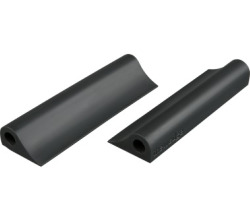
- If you have ever tried stacking wine bottles in your refrigerator you understand why this is a great solution. You can use one wedge to stack bottles against the wall or use two to create a sturdy pyramid of up to six bottles.
govinowine Shatterproof Stemless “Glassware” (about $13 for a four-pack)
- I love this drinkware because it can go anywhere — from a picnic to a party — and is proof you don’t have to drink good wine from a bad glass. Originally designed for the sales force in the wine trade, these sturdy “glasses” quickly found fans among the general public. The drinkware is made from BPA-free polymer plastic, and the shape and thin walls showcase a wine’s aromas and colors just as well as traditional glassware.
Winerd (about $35)
- My family and friends enjoy any type of game but add wine to the challenge and the game is on. This adults-only board game combines trivia with tasting and appeals to amateurs as well as professionals.
Perfect Pop Champagne Opener (about $7)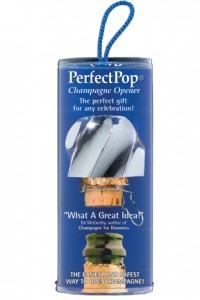
- This gadget boasts a foolproof and safe way of opening sparkling wine bottles. No need to even remove the foil. Just place the opener on the top of the cork, loosen the wire cage, twist and voila! Off comes the foil, cage and cork.
THE SPLURGES
Personalized Wine Travel Map (about $160)
- I loved finding a personalized wine gift as unique as this travel map, which helps you keep track of your family wine travels throughout the world. It comes in a mahogany frame with 52 color-coded flags and pins to mark your visits, favorites and even dream locations to wineries and vineyards. You can personalize the map with your family name or your winetasting club.
The Wine Glass Chandelier (about $400)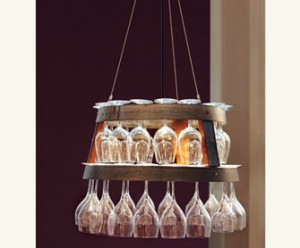
- If you drew my name this year (and your budget is big) then your shopping search has ended. Not only is this gift functional for glass storage, it also makes the ultimate cellar or kitchen island conversation piece. It’s made with original wine barrel rings and wood staves forming the frame for a mix and match of up to 15 stemmed glasses on the first tier and up to 18 on the bottom. A gift well worth the splurge for any wine lover.
by Lorri | Dec 11, 2011 | UnCorked
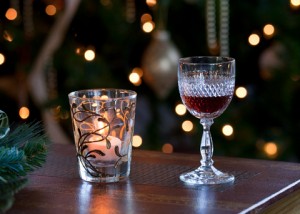 We all have our wine traditions and for me it’s port wine at Christmas. I cannot imagine ushering in the holiday without this one-of-a kind, fortified masterpiece.
We all have our wine traditions and for me it’s port wine at Christmas. I cannot imagine ushering in the holiday without this one-of-a kind, fortified masterpiece.
It takes its name from the city of Oporto, Portugal, and possesses many unique viticulture and winemaking techniques. The growing area, Portugal’s Douro Valley, has very hot summers and cold winters, making it a rather inhospitable area for viticulture.
Its isolated landscape is just as uninviting with its steep hillsides, poor, dry soils and archaic-looking planting terraces. In spite of the weather conditions and poor terrain, the port grapes thrive.
As much as the terroir affects the final product, the process used in making port is unmatched throughout the world. Just after harvest, a celebration of sorts begins with the traditional foot-treading in open trough wine vats by families and winery workers. They march, walk and even dance in keeping with this winemaking tradition. This may seem a bit awkward to envision, but the human foot is perfect for the task.
Port styles range from crusted and ruby to tawny, all blended from wines of different vintages made in different years and having spent time in wood barrels. These styles are ready to drink immediately after bottling. Vintage and single quinta (house) ports differ in that they spend minimal time in wood barrels before being bottled for the long, slow aging process.
THE VALUE
- NV Graham’s Six Grapes Porto, Portugal (about $32 retail)
THE SPLURGE
- NV Taylor Fladgate 20 Year Tawny Port, Portugal (about $74 retail)
by Lorri | Nov 30, 2011 | UnCorked
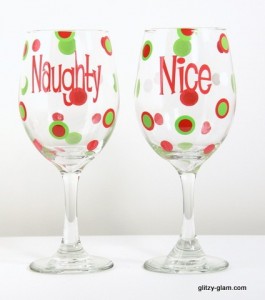 With all of the forthcoming celebrations, now is the time to get organized and let the wine be the easiest part of your entertaining. The following are some common questions.
With all of the forthcoming celebrations, now is the time to get organized and let the wine be the easiest part of your entertaining. The following are some common questions.
Can I use the same glass for red, white, Champagne, tea and water?
One glass can easily be used for all except the bubbly. For all-in-one serving, look for a glass size in between the traditional white and red. But for Champagne, the flute is the best choice. Without the rolling celebratory bubbles, this style of wine loses its luster in traditional stemware.
How many servings are in a wine bottle?
A standard wine bottle holds 750 milliliters, which is about 25 ounces. The average pour for any glassware should be about 5 ounces, giving you five servings per bottle. (Keep in mind if you are “filling” wine glasses, especially large red wine stems, expect to get much less per bottle.)
How much wine do I need to buy?
It may seem excessive but a good rule is it is better to have too much than not enough. For a wine-only gathering (no cocktails or beer) lasting two hours, plan for two to three glasses per person. So for a party with 20 guests, 12 bottles would be sufficient. For a four-hour dinner party, plan four to five glasses per person. A four-hour dinner party for eight guests would require roughly eight bottles.
Should I rent glassware or buy?
If you’ll be entertaining more than 30, rental makes sense. Renting costs, on average, a little under $1 per glass but most importantly there’s no clean up or future storage issues. However, if you entertain large groups regularly, you may want to keep your eye out for end-of-season bargains on wine glasses in chain stores for a future glassware stash.
How do I get red wine stains out of my carpet?
I always keep a bottle of Wine Away on hand for stains. It’s the best remover I’ve found for carpet and upholstery and costs about $9 a bottle. If you don’t have a wine-specific cleaner, as a last resort, use a paper towel to blot up as much of the stain as possible, saturate the spot with cold water and blot again. Then, mix a paste of three parts baking soda to one part water and put over spot. Let the paste dry, then vacuum.
How much should I spend per bottle for entertaining?
There’s no one-size-fits all answer but if it’s a large cocktail party, choose a wine that sells from $8 to $12. Retailers often offer Christmas specials and added discount incentives on quality wines making it easy for great values. For a dinner party, best advice is spending as much as you can afford. If you slaved in the kitchen preparing perfect foods, sauces and desserts, showcase the best wine your budget will allow.
 A few weeks ago, my husband and I nervously pulled the cork of a bottle we had tended for almost 15 years. Many occasions came and went with the discussion of whether it was too early, late or the perfect time.
A few weeks ago, my husband and I nervously pulled the cork of a bottle we had tended for almost 15 years. Many occasions came and went with the discussion of whether it was too early, late or the perfect time. When it comes to opening a bottle of champagne, you’re probably more worried about your toast falling flat than one of your guests.
When it comes to opening a bottle of champagne, you’re probably more worried about your toast falling flat than one of your guests. If there is one time of the year when I strive to save time, cut corners and get organized it is the rush of December. My goal is to eliminate the stress and enjoy the celebration. One way to achieve this is by keeping a few entertaining tips and wine recommendations handy.
If there is one time of the year when I strive to save time, cut corners and get organized it is the rush of December. My goal is to eliminate the stress and enjoy the celebration. One way to achieve this is by keeping a few entertaining tips and wine recommendations handy.


 We all have our wine traditions and for me it’s port wine at Christmas. I cannot imagine ushering in the holiday without this one-of-a kind, fortified masterpiece.
We all have our wine traditions and for me it’s port wine at Christmas. I cannot imagine ushering in the holiday without this one-of-a kind, fortified masterpiece. With all of the forthcoming celebrations, now is the time to get organized and let the wine be the easiest part of your entertaining. The following are some common questions.
With all of the forthcoming celebrations, now is the time to get organized and let the wine be the easiest part of your entertaining. The following are some common questions.